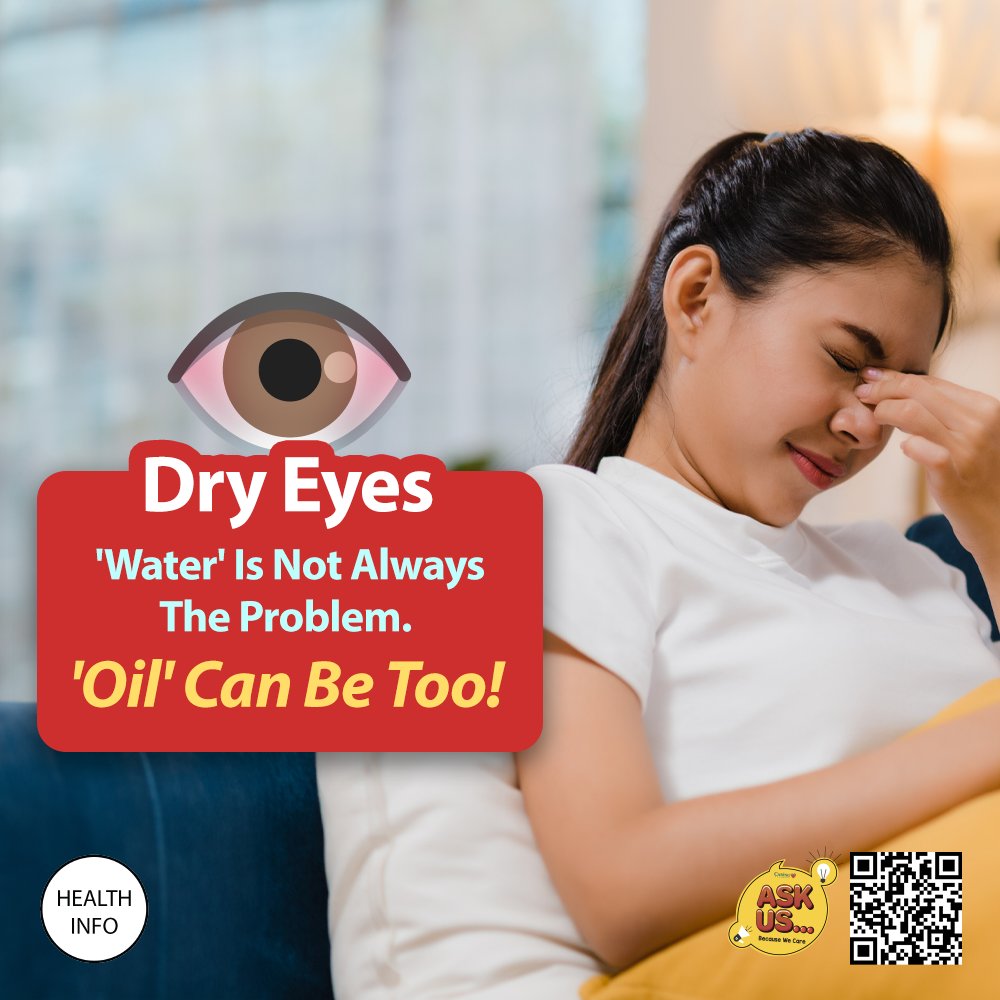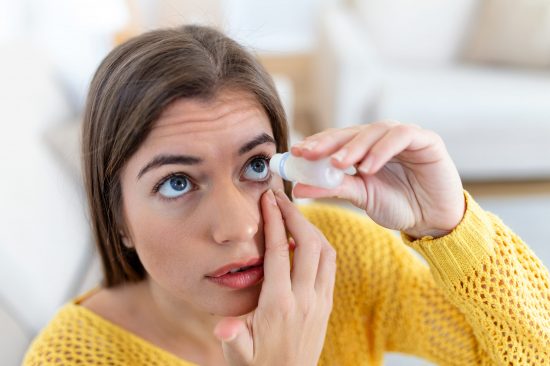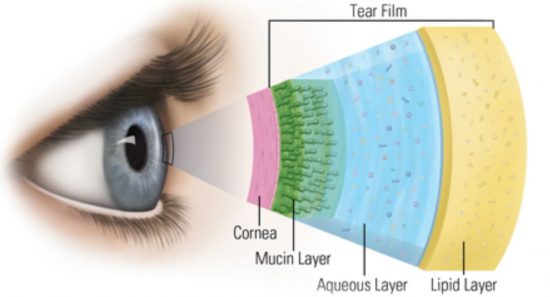- Home
- Health Center
- Health Info
- Dry Eyes: ‘Water’ Is Not Always The Problem. ‘Oil’ Can Be Too!
Eye
Dry Eyes: ‘Water’ Is Not Always The Problem. ‘Oil’ Can Be Too!


Are your eyes irritated, red or burning as you read this sentence? You may be suffering from dry eyes syndrome.
Symptoms of dry eyes include:
- Burning sensation
- Itchy eyes
- Dryness sensation
- Red eyes
- Blurred vision
Many who struggle with dry eyes can’t live without eye drops to soothe and hydrate their eyes. The trick to choosing a suitable and effective treatment is to know what kind of dry eyes you have.
The two main types of dry eyes are aqueous dry eyes and evaporative dry eyes. These two types can present in combination as well. 1 In aqueous dry eyes, the eye is lacking the aqueous layer; in evaporative dry eyes, it is due to a deficient lipid layer, which mostly stems from meibomian gland dysfunction (MGD). In 86% of cases, meibomian gland dysfunction is the cause of dry eyes disease. [2,3]

The tear film consists of 3 layers – mucin, aqueous and lipid layer. The lipid layer is the outermost layer to reduce the evaporation of our tears. The middle layer is the aqueous layer which is made of water, lubricating the eyes, whereas the innermost mucin layer helps the aqueous layer spread evenly and stick to the surface of the eye, allowing our eyes to stay lubricated.
What are meibomian glands?
They are sebaceous glands which produce lipids inside the eyelids, forming the outermost lipid layer. Meibomian oil produced helps to reduce evaporation of the aqueous layer, which is vital for tear film stability.
Dry Eyes & Screen Time
What went wrong? Wait, blink! Did you forget to blink while you’re reading this through the device screen? One of the main causes of dry eyes is a low blink rate. Our blink rate reduces significantly with digital screen usage.
Healthy blink rates and blinking properly (covering the cornea fully) is necessary for a stable tear film. When we blink, the oil spreads over the surface of the eyes creating a layer that protects the tear film from evaporating.4
When one is not blinking enough or blinking fully, this can clog the meibomian glands as the oil flow is hindered, and in the blink of an eye, we suffer with dry eyes syndrome as there is not enough oil on the tear film leading to evaporation of our tears.
Low blink rate does not only affect the lipid layer. A 2014 study in Japan found that people who spent hours on their computers had a lower amount of mucus in their tears!
Troubled by dry eyes? Cut down your time spent staring at a computer or a smartphone!
References:
- Lemp MA, Crews LA, Bron AJ, et al. Distribution of aqueous-deficient and evaporative dry eye in a clinic-based patient cohort: a retrospective study. Cornea 2012; 31:472-478.
- Craig JP, Nichols KK, Akpek EK, Caffery B, Dua HS, Joo CK, et al. TFOS DEWS II definition and classification report. Ocul Surf 2017;15:276-283.
- Findlay, Quan, and Kate Reid. 2018. ‘Dry Eye Disease: When to Treat and When to Refer’. Australian Prescriber 41(5):160–63. doi: 10.18773/austprescr.2018.048.
- Schulze M. Blink mechanics: Why it matters. Rev Cornea & Contact Lenses 2020; Jan/Feb: https://www.reviewofcontactlenses.com/article/blink-mechanics-why-it-matters.
- Dry eyes: How screen time parches your peepers [Internet]. WebMD; [cited 2023 Jun 1]. Available from: https://www.webmd.com/eye-health/dry-eye-screen-use
Latest Health Info
Healthy Weight, Happy Joints
How Does Weight Affect Knee Health? The Link Between Pounds And Pain Osteoarthritis (OA) involves the degeneration of joints, which ...
The Gut Warriors: Prebiotics, Probiotics and Postbiotics
When it comes to gut health, you’ve probably heard of prebiotics and probiotics. But did you know there’s also ...
Tip Moreh: Masa Berbuka Puasa
Moreh adalah tradisi unik yang biasanya diadakan selepas solat tarawih pada bulan Ramadan. Ia melibatkan penyediaan dan perkongsian makanan ringan ...



